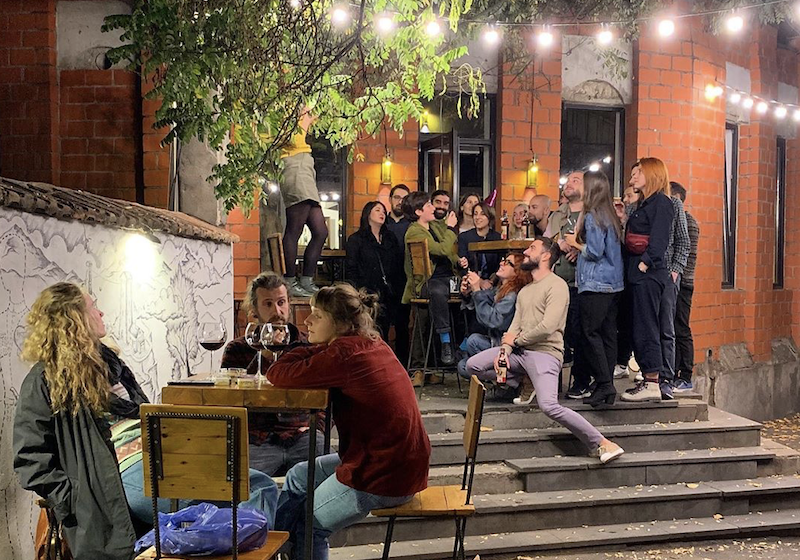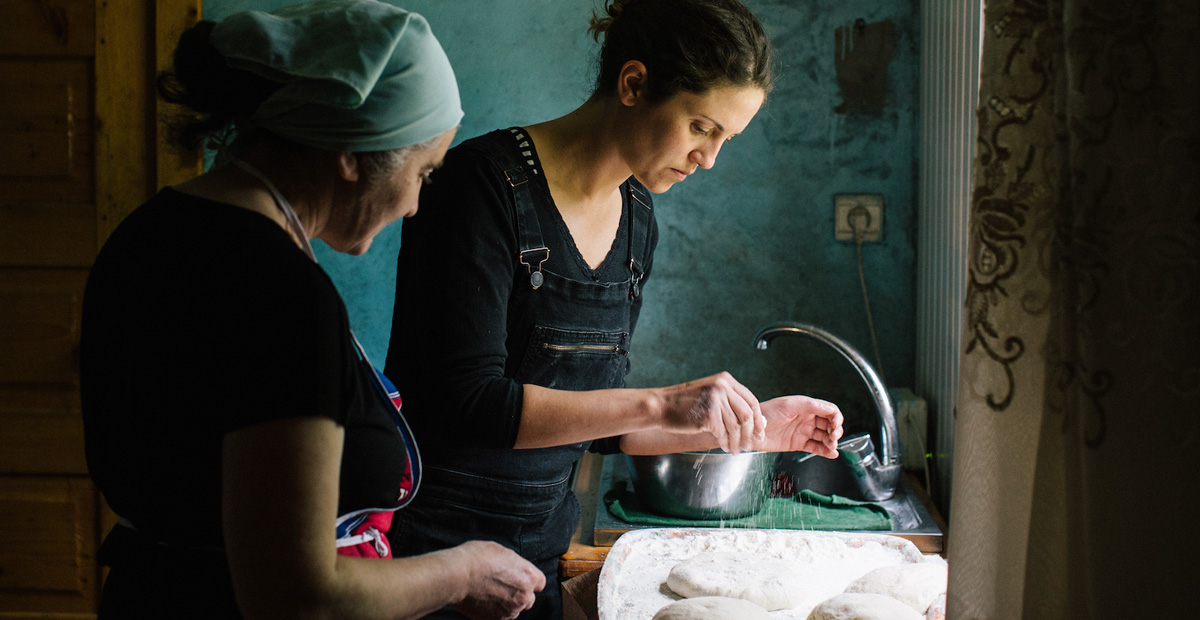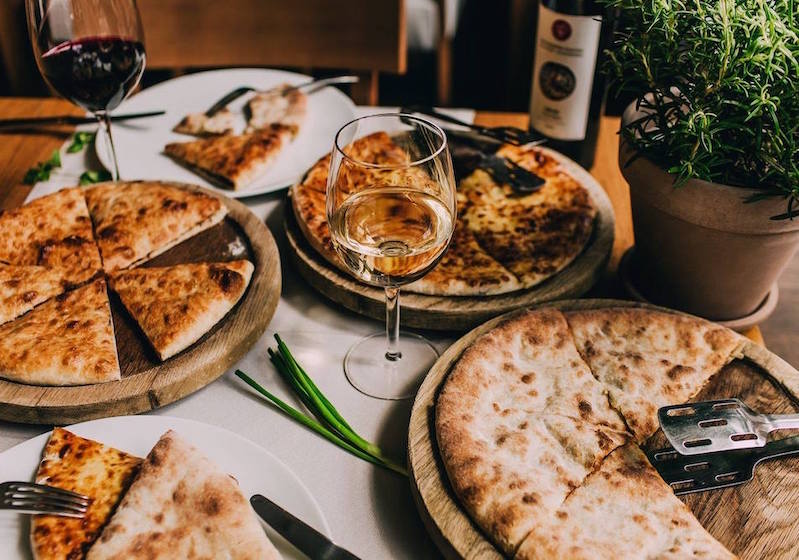Dark spirits: your guide to Georgia’s chacha revival

Georgia has long cemented its reputation as a haven for wine connoisseurs. But as tourism continues to boom, it's the country's national liquor, chacha, which is now undergoing a craft revolution.
God gave Georgians wine, and the devil, in a fit of competitive jealousy, provided them with a far more potent concoction – chacha.
Wine is a big deal in Georgia. Alongside Christianity and the unique Georgian language, it is a pillar of national identity. Everyone drinks it, everyone makes it, and not implausibly, Georgians even claim to have invented it.
Chacha’s proponents are trying to move past the spirit’s image of a hard and unpalatable peasant liquor
The word “chacha” roughly translates to “pomace” – the solids that remain after pressing grapes. And just as the word refers to a by-product of wine, the drink remains something of an afterthought. A strong grape brandy similar in acerbic taste to Italian grappa, chacha is typically found in unmarked plastic bottles. It’s used for sterilizing wounds, curing indigestion, and for getting really, really drunk.
But there’s a chacha revolution underway in Georgia. Chacha’s proponents are trying to move past the spirit’s image of a hard and unpalatable peasant liquor. Riding the wave of Georgia’s tourism boom and the country’s efforts to forge a national brand, they are casting chacha as a unique cultural product worthy of connoisseurs.
How is chacha made?
For thousands of years, Georgian wine was made in underground clay vessels called “qvevri.” After surviving Soviet industrialisation, this ancient method has undergone a revival in the 21st century. At Alexander Distillery, chacha is made using a distillation process that casts the traditional Georgian qvevri in a new role.
Nia Natsvlishvili is the woman who runs this show – a three-person operation hidden away among the idyllic rural backroads of Tetritskaro. When her husband Alexander passed away last year, Nia resolved to carry forward his simple mission of providing Georgians with the highest quality chacha possible.
The stone-walled barn of the distillery stinks pleasantly of alcohol, and Nia talks rapidly while gesturing at the six qvevri stills lined up in the middle of the room. There are hundreds of grape varieties unique to Georgia, but Nia makes her chacha from Asuretuli Black in October and Saperavi starting in December. After pressing, the pomace spends 48 hours with the soon-to-be wine, which Nia makes European style in stainless steel. The pomace is then fermented separately in the qvevri stills and double-distilled – a process that takes about four days in total. Some 500 kilos of grapes yield just ten litres of chacha at 65 per cent ABV, which is then diluted down to a more palatable 45 per cent with local spring water. The setup is at both traditionally Georgian and subversively contemporary – ancient technology deliciously repurposed for the modern mission of making chacha a sophisticated drink.
The purifying qualities of the patented clay stills really do work. Alexander’s chacha still possesses that faintly green, overripe, and bewitchingly pleasant flavour shared by village moonshines, but it tastes mountain-water clean. Alexander Distillery also make an incredible whisky, which is tripled distilled in the qvevri stills and aged in oak for three years. Although Nia has plans to increase capacity, she wants to keep the operation small-batch. She exports the whisky to restaurants in Germany, the United States, and Hong Kong, but the chacha stays in Georgia, most of it destined for the shelves of Chacha Corner in Tbilisi.
Where are the best places to buy chacha?
Vato Botsvazde is the self-proclaimed “chachaholic” behind Chacha Corner, – the only shop in the Georgian capital dedicated to the procurement and sale of chacha. Located in central Tbilisi, at 11 Giga Lortkifanidze, Chacha Corner is a single-room shop set low into the street. Space is limited, but every inch of wall is occupied by chacha. From behind a bar at the far end of the shop, Botsvazde pours generous tasters for intrigued tourists. He started out in late 2017 with only one shelf of chacha. Now, he stocks over 200 brands, most of which are made via small batch operations. Botsvazde doesn’t just sell chacha, he also hunts down chacha makers and helps them distil at scale. I’m told that the chacha I’m currently knocking back, made with rare Usakhelouri grapes by Ana’s Wineyards, is one of just 120 bottles produced each year.
“If chacha makers have a good aura and love what they are doing, then the chacha will be good”
Like all craft revolutions, the chacha movement is about the quality engendered by dedication and authenticity. “If chacha makers have a good aura and love what they are doing, then the chacha will be good, and it will make you happy when you drink it,” Botsvazde says.
I tell Botsvazde about a recent experience drinking chacha while horse trekking in the Tusheti mountains, but the anecdote doesn’t land well. Our local guides had cajoled us into drinking a litre of rocket-fuel chacha out of old plastic bottles and we’d drunkenly continued our trek, half-hanging from our horses. Botsvazde may not be averse to a good drinking session, but he’s keen to move chacha past stereotypes of a crude moonshine chugged by drunkards. “That was probably not good chacha,” is all he says, somewhat disapprovingly.
Where are the best places to drink chacha?
“People don’t think chacha belongs in a glass bottle,” says Konstantin, the manager at Chacha Time – a bar near Chacha Corner that uses cocktails to showcase the best of chacha. Set in a spacious old bakery retrofitted with trendy bar furniture and an eclectic menu of borsch and burgers, Chacha Time provides an easy-going introduction to Georgia’s national spirit.
The cocktail menu inserts chacha into all the classics — see “Batumi Sunrise”, “Tbilisi Mule”, and “Sex on Chacha” — but my favourite is a simple chacha tonic mixed by Konstantin. Using just cucumber infused tonic and a dash of lemonade, the cucumber sings in tune with those ripe green notes that chacha is either loved or reviled for.
According to Konstantin, chacha started getting good around the same time that Georgian wine underwent a revolution in quality. Moscow’s ban on Georgian wine in 2006 devastated the industry but forced a focus on high standards and a growth in small-scale production. Around this time in 2010, one of Georgia’s best-known wineries, Chateau Mukhrani, started selling chacha alongside its wine selection, precipitating what Konstantin calls “the new age of chacha”. I ask the student next to me what she thinks of chacha. She takes a sip of her beer and tells me about her grandmother’s triple distillate home-brew. “I only drink chacha when I’m already really drunk,” she says.
Transforming chacha’s reputation is no easy task, but Konstantin says he’s making steady progress converting young Georgians to his cause. His first mission is a national renaissance, but his ambitions are global. Fifty years ago, he says, no one knew about tequila. Konstantin hopes that chacha will one day follow a similar path to worldwide prominence.


